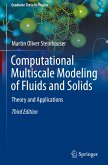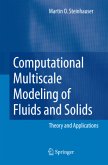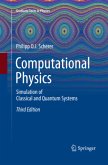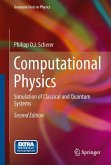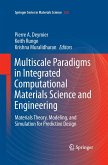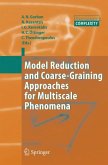The expanded 3rd edition of this established textbook offers an updated overview and review of the computational physics techniques used in materials modelling over different length and time scales. It describes in detail the theory and application of some of the most important methods used to simulate materials across the various levels of spatial and temporal resolution. Quantum mechanical methods such as the Hartree-Fock approximation for solving the Schrödinger equation at the smallest spatial resolution are discussed as well as the Molecular Dynamics and Monte-Carlo methods on the micro- and meso-scale up to macroscopic methods used predominantly in the Engineering world such as Finite Elements (FE) or Smoothed Particle Hydrodynamics (SPH).
Extensively updated throughout, this new edition includes additional sections on polymer theory, statistical physics and continuum theory, the latter being the basis of FE methods and SPH. Each chapter now first provides an overview ofthe key topics covered, with a new "key points" section at the end. The book is aimed at beginning or advanced graduate students who want to enter the field of computational science on multi-scales. It provides an in-depth overview of the basic physical, mathematical and numerical principles for modelling solids and fluids on the micro-, meso-, and macro-scale. With a set of exercises, selected solutions and several case studies, it is a suitable book for students in physics, engineering, and materials science, and a practical reference resource for those already using materials modelling and computational methods in their research.
Extensively updated throughout, this new edition includes additional sections on polymer theory, statistical physics and continuum theory, the latter being the basis of FE methods and SPH. Each chapter now first provides an overview ofthe key topics covered, with a new "key points" section at the end. The book is aimed at beginning or advanced graduate students who want to enter the field of computational science on multi-scales. It provides an in-depth overview of the basic physical, mathematical and numerical principles for modelling solids and fluids on the micro-, meso-, and macro-scale. With a set of exercises, selected solutions and several case studies, it is a suitable book for students in physics, engineering, and materials science, and a practical reference resource for those already using materials modelling and computational methods in their research.
From the reviews: "This is an advanced mathematical treatise devoted to an overview of numerical computational methods and techniques for materials modeling on different length and time scales. Steinhauser ... covers microscale, mesoscale, and macroscale of materials modeling in two parts and seven chapters. ... The book includes several appendixes, with one that provides further reading and another that lists almost 500 references. ... Summing Up: Recommended. Graduate students and researchers/faculty in mathematics and physics." (R. Darby, CHOICE, Vol. 45 (10), June, 2008)


